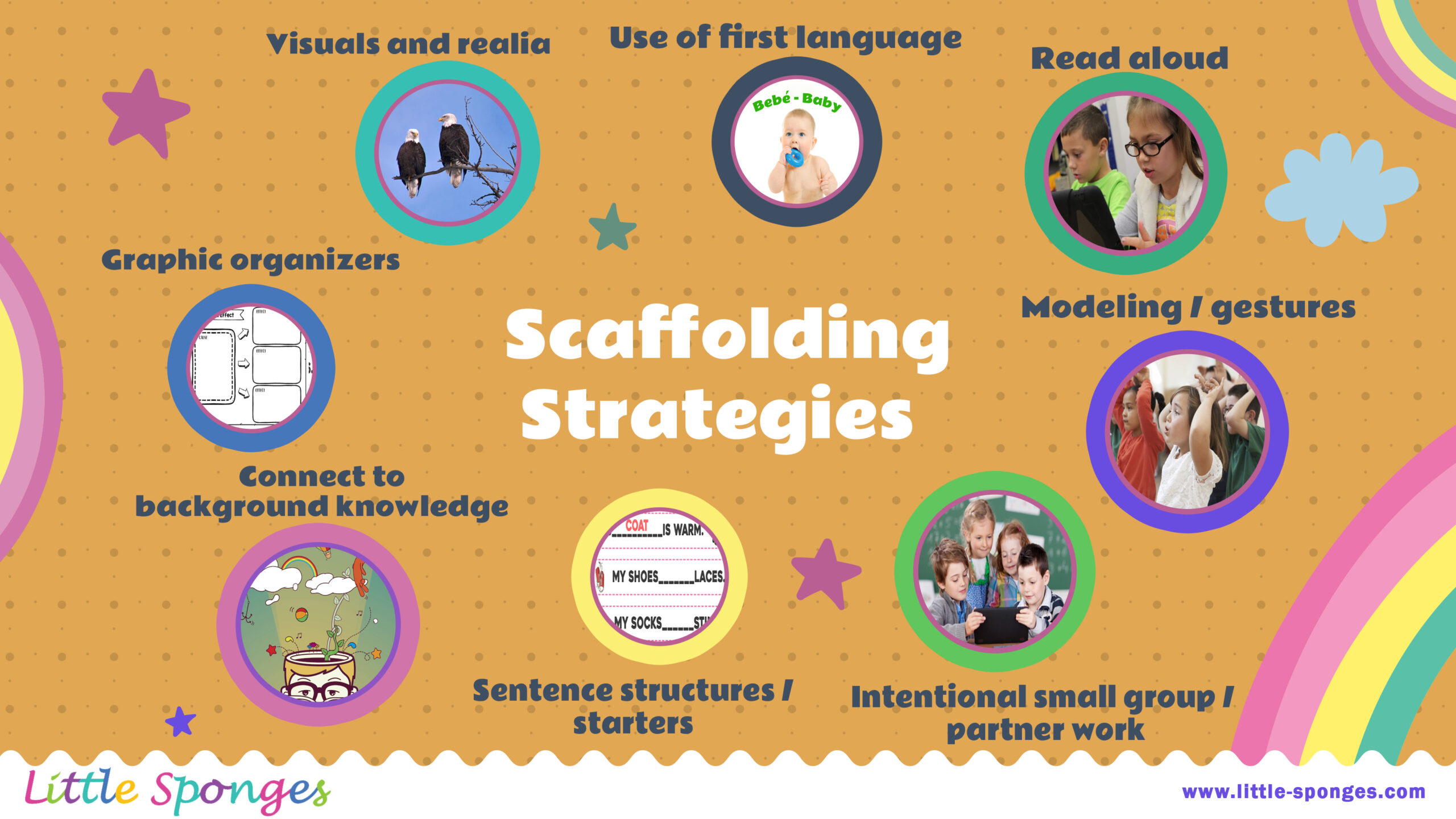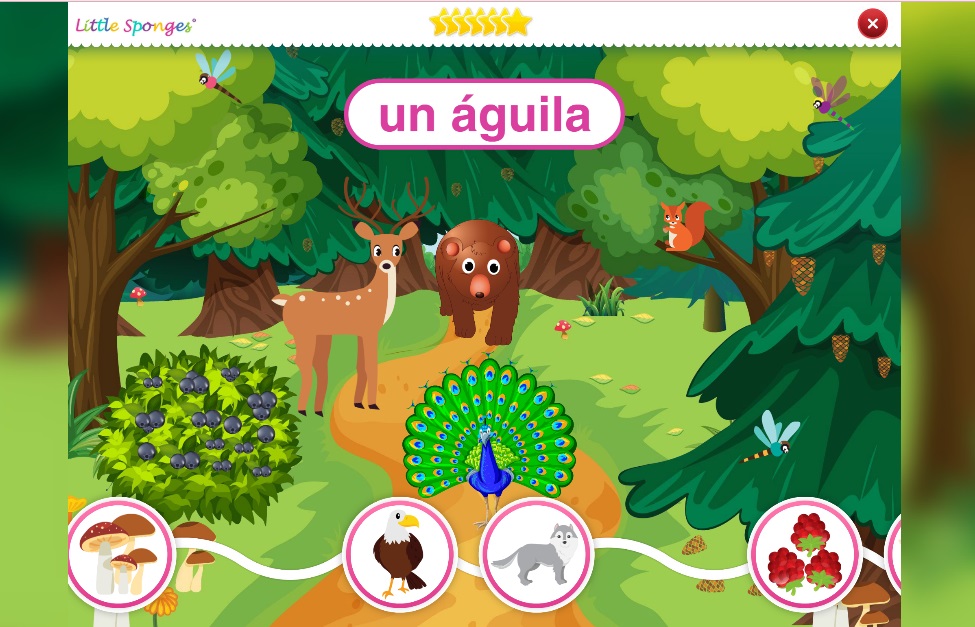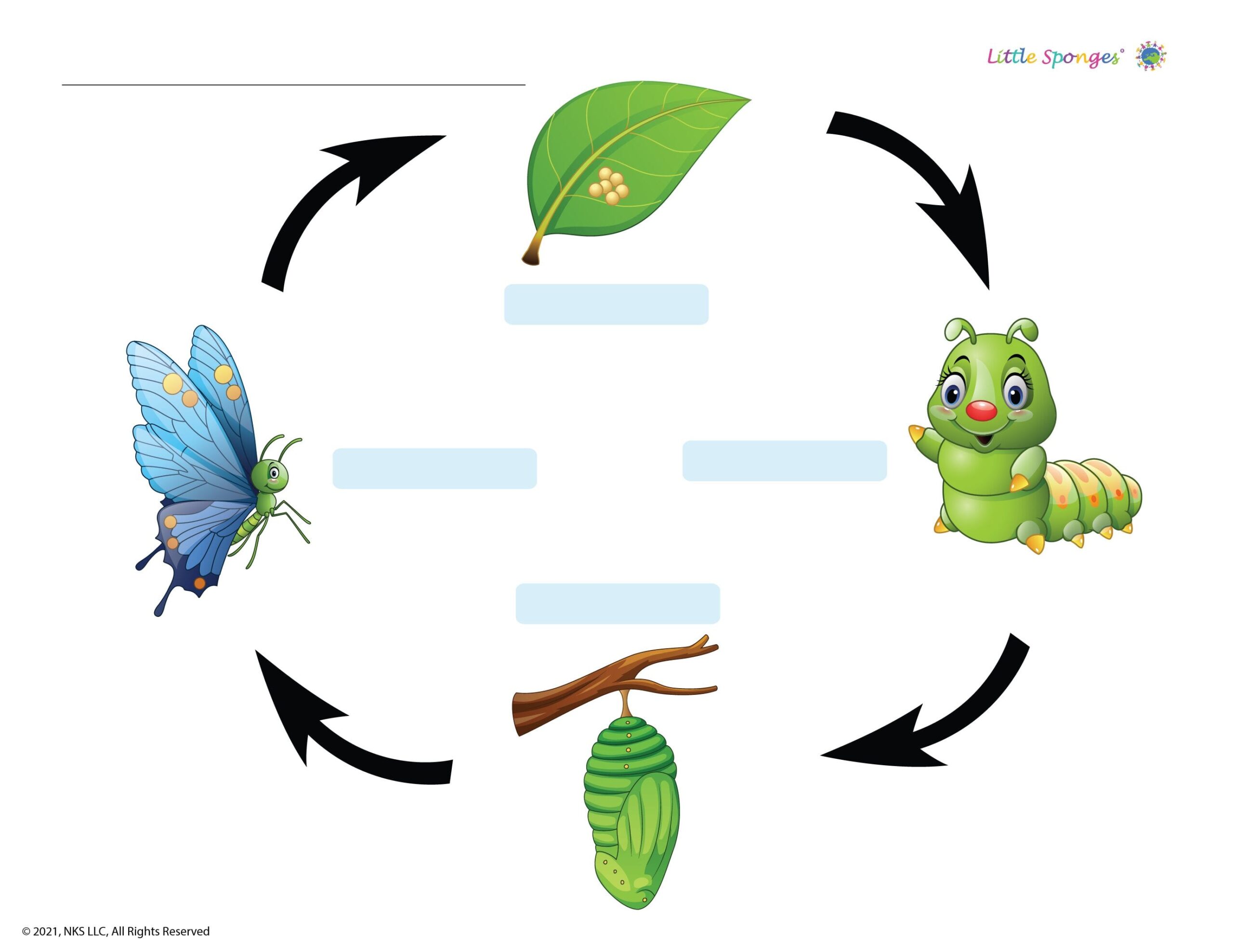Scaffolding is a way of assisting students by breaking learning down into manageable chunks as they progress toward greater understanding and independence. Research shows that without scaffolding, ELLs and DLLs often struggle needlessly to access grade-level content and are less able to perform well academically. If you are conducting instruction using your native language, you may underestimate the difficulty of content that you are teaching. It’s important to put yourself in your students’ shoes by looking at content in another language. Ask yourself about support and scaffolding that you would need in order to comprehend and retain this content in a language that you don’t know. Little Sponges® program enables many scaffolding strategies to help educators provide more effective instruction.
In this blog post, we are going to explain 8 scaffolding strategies as well as tools (provided by the Little Sponges program) that you can use to help you incorporate scaffolding in your instruction.

1. Utilize Visuals And Realia

2. Facilitate Read-Aloud Activities
Read-aloud instructional practice improves vocabulary, increases comprehension, strengthens listening skills, develops phonemic awareness, and encourages students to read.
Little Sponges supports the implementation of this scaffolding strategy through read-along videos and literacy games. Students have multiple opportunities to sound-out new vocabulary and read a story with Mishka and Frog (the main characters of the program). If they are not sure how to pronounce a new word, they can repeat after the puppets. Children feel safe reading aloud because they have audio support when they need it. Also, they can work on their reading independently and not feel judged or rushed by others.
To see an example of one of the Little Sponges’ read-aloud games, click here.
3. Use Modeling and Gestures

4. Create Intentional Small Groups
Pair work and small group work allows students to share their knowledge and help their peers. It gives students a sense of achievement when reaching a team goal, teaches students how to lead and be led by someone other than the teacher, and allows teachers to monitor, move around the class and really listen to the language students are producing.
Little Sponges supports the implementation of this scaffolding strategy through its interactive games and skills-based activities, Click here to try one of these activities that enable partner work and small group practice.
5. Use Sentence Starters

6. Connect to Background Knowledge
7. Provide Graphic Organizers

8. Use The First Language
The strategic use of your students’ L1 when you are teaching L2 is a great way to provide “comprehensible input” and help your students learn faster by transferring knowledge from L1 to L2.
Little Sponges supports implementation of this scaffolding strategy by providing activities in L1 and L2 that enable students to bridge between their first and second language and improve comprehension when learning new content. Little Sponges program draws students’ attention to cognates which builds a bridge between the native language and the target language and helps students learn new vocabulary faster.
To see an example of Little Sponges’ real-life, read-along, bilingual videos, click here.


